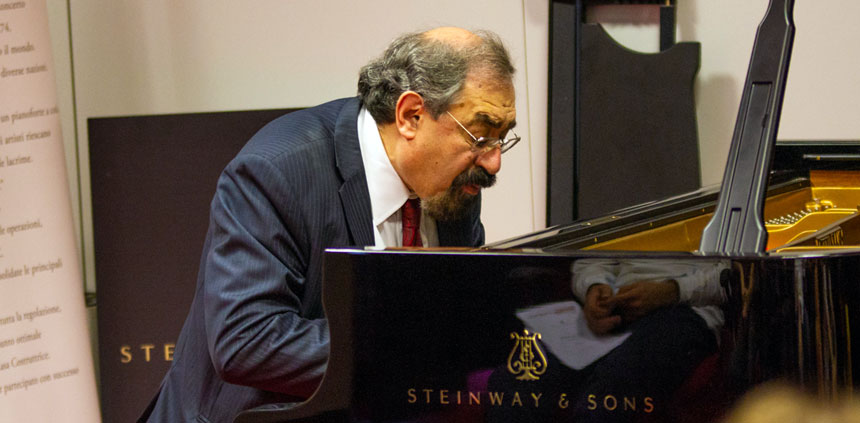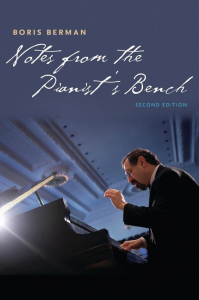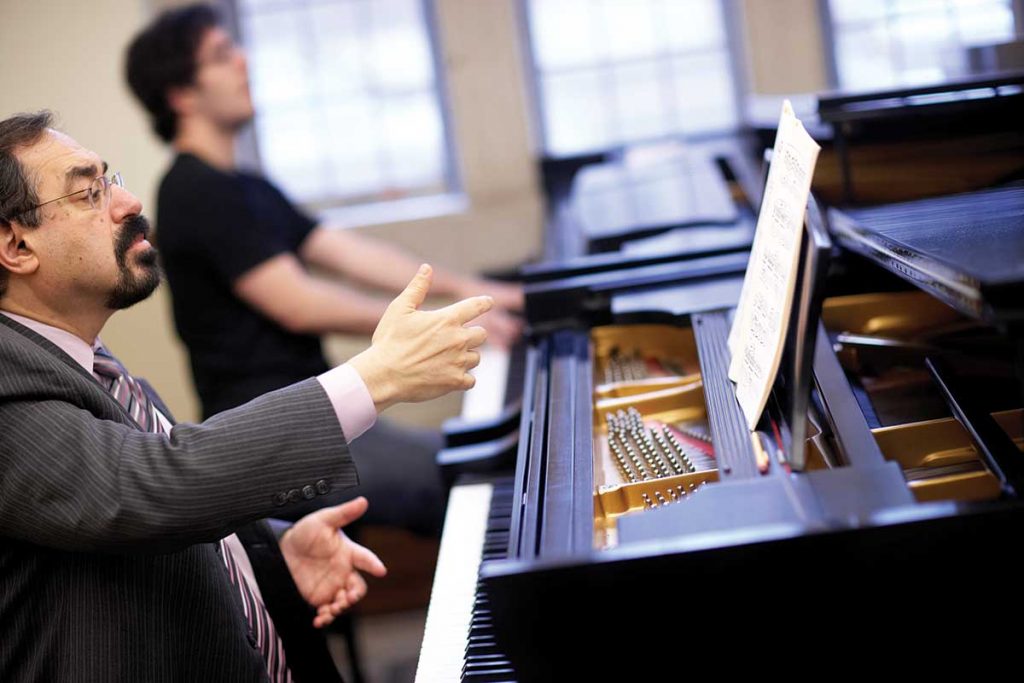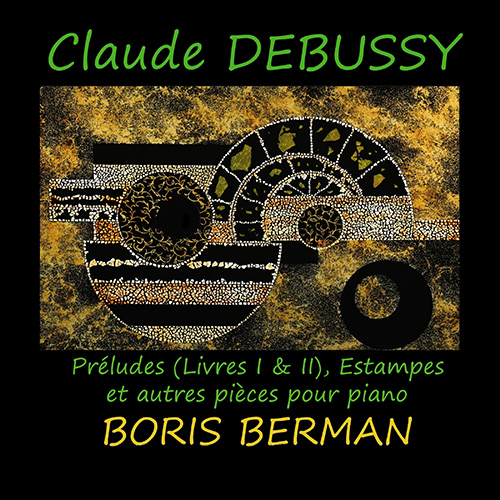Since the first edition of Boris Berman’s Notes from the Pianist’s Bench was published in 2000, it has been read by countless pianists, piano teachers, and piano students throughout the world. The book has been translated into several languages and adopted as a required text in universities and conservatories. Just recently, it was published in a second edition, available in both print and electronic formats. Piano Street’s David Wärn met Mr. Berman at the Cremona Musica Piano Experience, to talk about the contents of the book, and about the changes and updates of the new edition.

Boris Berman performing at the Cremona Musica Piano Experience, September 2018
– Mr. Berman, please tell us how the new edition came about.
– I first wrote the book because I noticed that I kept coming back to the same issues with my students. So, I thought maybe I should cover these issues in writing once and for all. But it appeared that it’s not easy to cover everything once and for all! The idea of the second edition came up because I felt that quite a few years passed; there are some things I see differently now. Also, new ideas came up in the intervening years which I wanted to include in a new edition.
 Notes from the Pianist’s Bench – second edition[/caption]At the same time the publisher, Yale University Press, was interested in getting on the technology bandwagon. We spoke about it and decided that it would be nice to include some audio and video demonstrations. The idea was to find certain moments in the book which are hard to put in words, but easier to understand by hearing or watching a demonstration. When you are reading the E-book this new material is very easily available: you just click on the page. For readers of the printed book, there is a dedicated website through which they can access the video and audio. (View sample >>)
Notes from the Pianist’s Bench – second edition[/caption]At the same time the publisher, Yale University Press, was interested in getting on the technology bandwagon. We spoke about it and decided that it would be nice to include some audio and video demonstrations. The idea was to find certain moments in the book which are hard to put in words, but easier to understand by hearing or watching a demonstration. When you are reading the E-book this new material is very easily available: you just click on the page. For readers of the printed book, there is a dedicated website through which they can access the video and audio. (View sample >>)
Some of the visual demonstrations actually came to me quite spontaneously: for example, there is one moment when I talk of different levels of clarity, comparing it to perspective in painting. Since I had the opportunity, I could not restrain myself but to give an example of a painting. Of course, it could have been done in print as well, but it felt more spontaneous to do it in a video.
– You put great emphasis on sound — the first chapter in your book is called Sound and Touch. In it, you explain in great detail how different movements influence the sound of the piano. But you also write that some teachers and students neglect the topic of sound. How can that be?
– Well, I had the great fortune to study with Lev Oborin, who among the illustrious professors of the Moscow Conservatory was known as paying particular attention to the sound. Consequently, this was something which was constantly referred to when I was a student, and something which I continued to carry on in my pedagogical work.
There are several reasons why sound is a neglected topic. One is that many students are primarily interested in acquiring velocity. This is what their teachers and themselves are concerned with above all. Additionally, many of them practice on terrible instruments, which don’t give them much chance to discern fine gradations of the sound. Or some of them practice on electronic pianos, which limits the possibilities even more. But I think the primary reason is that too many students are thinking that the way to success is to play as fast as possible, and as loud as possible. Unfortunately, some teachers — by no means a majority, but some — cater to this group of students.

Boris Berman teaching
– You write that we need two kinds of ears: the subjective one, which we use to imagine the sound that we want, and the objective one, which actually hears what is coming out of the instrument. What are the best ways of developing one’s ‘musical ears’?
– Let’s start with the objective ear. There are many students — especially talented students, students with a great imagination — who are so engrossed in.. emoting, that they do not actually hear themselves. I have a student right now, who is phenomenally gifted. But his performances are full of various exaggerations. In our lessons, I ask him to record himself. I have done this on many occasions before, but never so persistently as with him. Then we listen to the playback together, and I point out: ‘Hear this: I don’t think it’s a good idea to play this way because of this or that’. Or he says: ‘Oh, I didn’t realize I changed the tempo so much!’ The thing is: nobody can hear himself objectively 100%, even the most experienced performers, but we all must try to develop this ability. Recording oneself is a very good way of developing an objective ear.
As for the subjective ear: here I talk about creative imagination. You can say, ‘I want to play this place piano’. Fair enough. But there are many kinds of piano, and this intention alone will not take you far. You can say, ‘I want to play it piano with great intensity’. This is is something different — then you have to figure out what creates the feeling of intensity. Because at the end of the day, it is your physical action that conveys such a feeling. It’s never imagination alone, but you have to start with imagining something.
And so you work to get the sound which you think conveys the idea of intensity. Then you suddenly may have another idea: ‘This should be played like a cello solo’. Again, this is something different, this a new task that you put in front of yourself, and so on. This is how many people work. Others need an extra-musical image. Some musicians may have the synaesthetic way of listening to music: they would perhaps say, ‘I want this to be of a dark red color’. If this helps you — fine. Some would say: ‘I want it to sound like I lost the love of my life’. If this helps — go ahead. All this is to spur your imagination. And hopefully, your imagination will spur your technical know-how.
– Is there also such a thing as ‘subjective’ and ‘objective’ technique? You write very objectively about how various physical actions influence sound. At the same time, you encourage students to seek their own approach, to find what works best for each person.
– I work with students of different backgrounds and different temperaments, and this all has a bearing on the way they play— but we should probably begin with their physical build. It is clear that a very heavily built, tall pianist, needs different physical actions than a very tiny, delicately built person. I’m constantly telling this to students. And if I have an opportunity — if, for instance, I work with a student, and another student who is built differently is present in the room, I say: “Well, for you it is better to play this way, but she needs something completely different. And if you will be teaching somebody of her physical build, you would need to know what to suggest to this student.”
Each pianist feels what is convenient and comfortable for himself — but the teacher needs to know what will be the most practical and convenient for this particular person. Sometimes, I will say to a student, ‘You see, this can be achieved this way, or this way, or that way. I suggest that you try them all to see what works best for you.’ I often see my students — and some of them are fantastically gifted and greatly advanced — doing something that would never work for myself. But if it works for them — fine!
– In a chapter called The Art of Teaching and the Art of Learning, you mention that some students of today adopt a kind of ‘consumerist’ approach, rather than subscribing wholly to their teacher’s general musical and aesthetic principles. They view lessons as a visit to a supermarket; if they do not find exactly what they want, they just go to the next store. What are they missing?
– You have to realize that every accomplished performer plays a certain way because he believes that it corresponds to his musical, aesthetic aspirations. Somebody may say. ‘Oh, I really dislike his interpretations but he has a gorgeous tone, so maybe I will learn from him the tone but leave alone his interpretation.’ But the tone of a pianist is this and not any other because this is how he hears the music. It cannot be separated.
What students often don’t understand is that a teacher is much more than a provider of useful tips. Of course, we are all constantly learning by picking things up, sometimes subconsciously, but to go to this teacher for wrist technique, and to that teacher for finger technique, and to this teacher for upper arm technique, I find lacking sense.
What you will lose is musical integrity. Horowitz had a fantastic technique,he was one of the greatest virtuosos. Do you think his technique could be organically adopted by somebody like.. Radu Lupu? No, because their whole musical Weltanshauung is very different.
– You write that one of the most important things a teacher communicates to the students is ‘a sense of the right measure’. Excesses and exaggerations — in our physical actions as well as in our musical interpretations — must be avoided. Reading this, I was wondering if you are not too hard on exaggeration? Aren’t there certain situations or stages of development where it can be a good idea to ask students to exaggerate musical ideas or physical motions?
– It’s a very good question; I remember I got a comment specifically about this from a teacher who also thought that I’m too hard on exaggeration. I know the teacher and I know his students, let’s say many of them are very… obedient. Of course, he would crave for somebody to exaggerate! And I was thinking of my own students, who often seem to have no inhibitions… So yes, it depends what kind of students you are working with.
– So, how would you encourage a student not to be too obedient or timid?
– In this case, I would say, after we discussed what their intention is: ‘go for it, don’t be afraid to exaggerate!’ Sometimes I tell students an old joke about how one makes a bagel: ‘well, it’s very simple — you take a hole, and you wrap it in a dough.’ Obviously you don’t start with the hole, you start with the dough — you start with something material. Then you trim it. You don’t start with void.
– And how do you deal with your students’ exaggerations?
– Exaggerations are always motivated by something. For some people, the mere justification might be to be original, or to do something that nobody did before. There are also some people who feel that music becomes more expressive this way. You know, I write about it — it’s so seldom that we musicians say to each other, or teachers say to their students, ‘oh this is absolutely wrong, you treat this piece like a brilliant presto and I feel it is a dark andante’. Usually, we’re talking about “how much”: how much to slow down, how much to make a crescendo… and this is what the teacher needs to communicate. Of course, it’s very simple to say ‘it’s too much’, but I find it very valuable when, instead, you say: ‘this ritenuto would be logical and legitimate if the section was ending here. But it is ending a few bars later. By slowing down so much, you signal that this is the end of the section, and it is not.’ This is one of the ways of dealing with exaggeration.
But often — and here I come back to where we began — the student doesn’t realize that he exaggerates. Early in my pedagogical work, I had a very talented student who played with all kinds of exaggerations, but because he was talented it was still very interesting to hear. And I said to myself: ‘With this boy, I need to be careful, I should not conform him. He has his own vision.’
So, I was kind of pussyfooting around him for quite some time, until once he played in such a way that I really could not accept. I said, ‘Well, I know you want it to sound this way’, and I played it for him, and he said, ‘No no no, I don’t want it to sound like that! And I said, ‘How would you like it to sound?’ And he demonstrated something quite commonsensical. Then I understood that it’s not that he hears it differently. His listening — objective listening — is distorted, and it’s a completely different story.
– How would you like the book to be used? Do you use it yourself as a complement to your teaching?
– I do. Sometimes, I say to a student, ‘You know what, we have discussed this issue, but I also write about it in my book in a more general, or more extensive, way — why don’t you read a certain chapter’. This is how I think the book should be read. Probably not from cover to cover — it’s not a novel or thriller. But I hope that a teacher may assign a certain chapter to a student. We all know that the lesson time is quite short. A teacher has to deal with numerous things: correcting notes, correcting rhythms, correcting specific issues in the piece. The teacher may not have time for a general discussion. This is where I think the book can be very useful. I think that all the topics I discuss should be of interest for professional pianists, but not to the same degree at any given time. What I mean is that maybe at a certain point a student needs some help with certain technical issues. Perhaps a few months later, more general aspects of interpretation will come to the fore. I would hope that different parts of the book can serve musicians at different stages of their development.
The book at Amazon.com:
Notes from the Pianist’s Bench: Second Edition
Recommended listening:


(This is a new feature available for Gold members of pianostreet.com)
from Piano Street’s Classical Piano News https://www.pianostreet.com/blog/articles/the-art-of-listening-updated-notes-from-bermans-bench-9464/
No comments:
Post a Comment